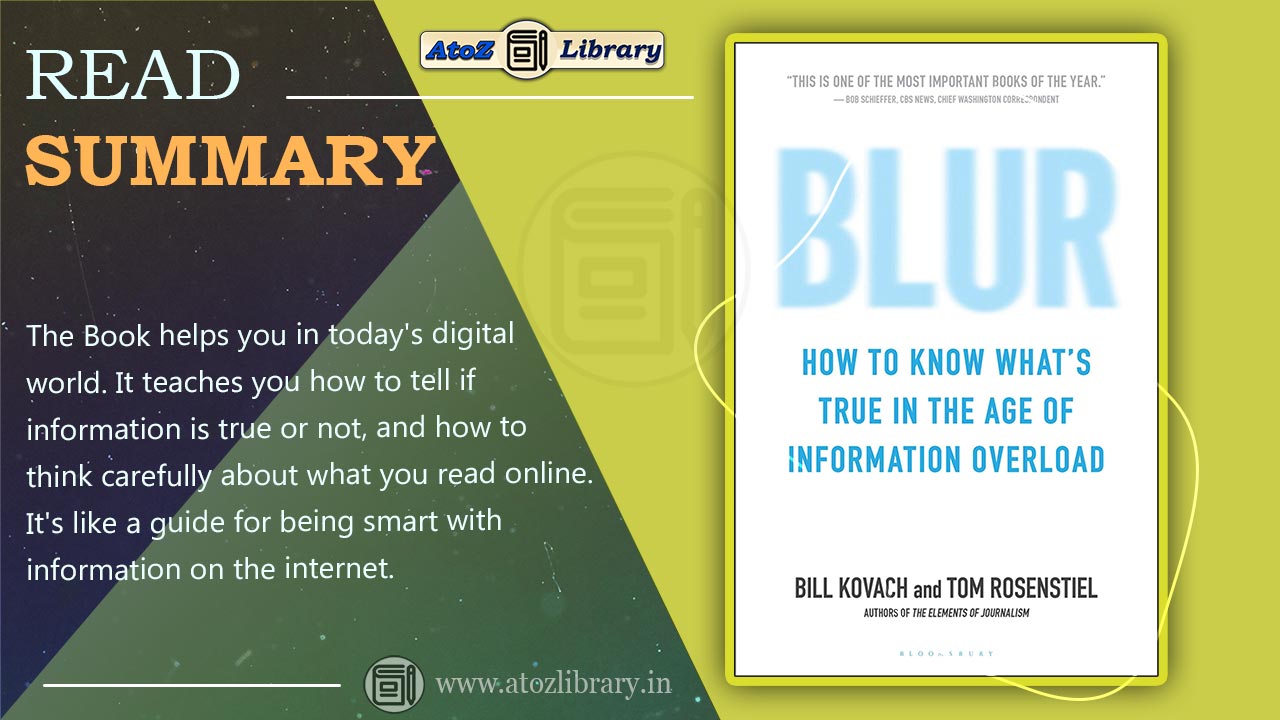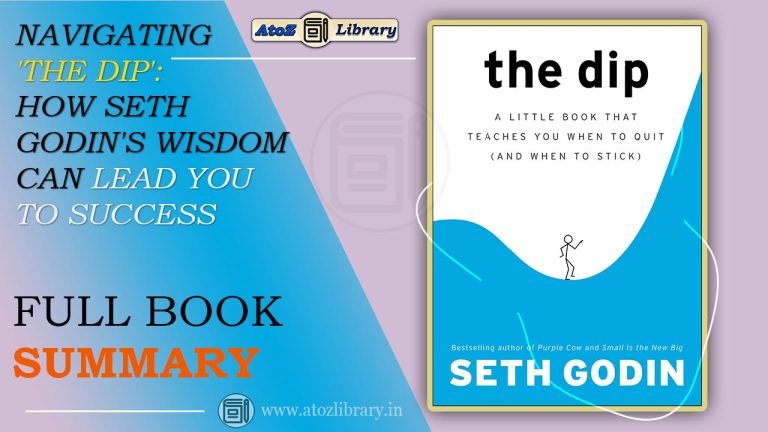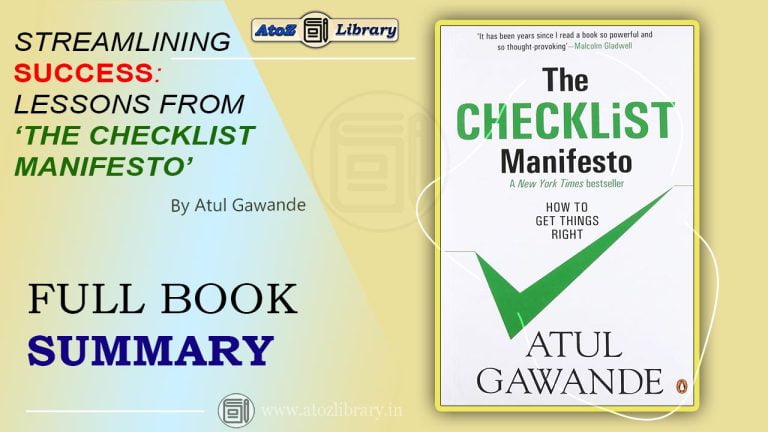Introduction
Ever tried putting together a puzzle without all the pieces? That’s what it feels like in today’s world of too much information. “Blur” by Bill Kovach and Tom Rosenstiel is like your cheat sheet for this digital puzzle.
Imagine news and fun stuff all mixed up, and everyone with a phone acting like a news reporter. “Blur” is all about helping us figure out which pieces are true and which are not.
In this quick guide, we’re diving into the tricks and twists of the digital world. “Blur” is like the secret code for finding the facts in a sea of online noise. Let’s explore how to crack the code and make sense of the information chaos.
Ready to join the adventure? Let’s jump into “Blur” and discover how to solve the information puzzle in a world where truth can be a bit tricky to find.
The Blurring of Boundaries:
Imagine you’re scrolling through your phone, and you see something interesting. Is it news? Or just something fun? Welcome to the “Blur” zone, where it’s tough to tell one from the other.
In “Blur,” Bill Kovach and Tom Rosenstiel talk about this mix-up. They show us how news can start looking a lot like the fun stuff we enjoy online. It’s like trying to tell if your smoothie has more strawberries or bananas — a bit tricky.
Why does this happen? Well, in today’s world, being attention-grabbing is a big deal. “Blur” helps us understand why this mix-up matters and how it changes the way we understand things.
The Impact of Digital Technology:
Okay, let’s talk about how our phones are like magic wands. In “Blur,” Bill Kovach and Tom Rosenstiel spill the beans on how these tiny devices shake up the way we know things.
Imagine this, you can get news from anywhere, anytime. But here’s the twist — not all of it is real. “Blur” shows us how digital magic, like social media and the internet, turns us into information wizards, but sometimes, we end up with tricks instead of treats.
So, why does this matter? Well, it’s like having a superpower without a manual. “Blur” gives us the lowdown on how this digital magic changes the game. We’re going to peek behind the curtain and find out why our phones aren’t just gadgets but powerful information tools.
You May Like:- Influence: The Psychology of Persuasion by Robert B. Cialdini – Complete Easy Book Summary
The Role of Journalism:
Imagine journalists as superheroes, wearing truth capes and digging up secrets. That’s the picture “Blur” paints about the role of journalism.
So, what’s the deal with these truth-seekers? Well, in “Blur,” Bill Kovach and Tom Rosenstiel spill the beans on how journalists are like superheroes for real stories. They’re the ones who go behind the scenes, asking tough questions, and making sure we know what’s really going on.
But, here’s the twist: in the digital world, everyone can pretend to be a journalist. “Blur” helps us understand why this can be confusing. It’s like having lots of superheroes, but not all of them wear the truth cape.
Why does this superhero stuff matter? Because without real journalism, we’d be in the dark. “Blur” shows us why we should care about the true heroes and how to spot them in the digital crowd.
The Rise of Citizen Journalism:
Did you know? Nowadays, we’re all news ninjas, thanks to something called “citizen journalism.” In “Blur,” Bill Kovach and Tom Rosenstiel open the curtain on how regular folks like us can become reporters.
Imagine someone sees something cool, whips out their phone, and suddenly they’re reporting live! “Blur” explains why this new way of sharing news is pretty awesome. We all get to be part of the news team, which is kind of cool.
But, here’s the catch: not all news ninjas are the same. “Blur” helps us see the difference between a pro reporter and someone just sharing stuff. It’s like telling apart a superhero from someone in a costume.
So, why does this matter? Because news ninjas help us see more sides of a story. “Blur” shows us the power we all have, but also why we need to be smart about it.
The Filter Bubble:
Okay, here’s the scoop: the internet is like a magical bubble that shows us stuff it thinks we like. “Blur” by Bill Kovach and Tom Rosenstiel spills the beans on this digital wizardry they call the “filter bubble.”
Imagine this bubble as a cozy space where the internet knows what you love, but here’s the catch—it might keep you from seeing other cool stuff. “Blur” explains how this can be a bit like having a super comfy chair that’s hard to get out of.
So, why does this bubble trouble matter? Because it might make our world too small. “Blur” shows us why seeing only what we like can be like living in a house with only one window.
You May Like:- Man’s Search for Meaning by Viktor E. Frankl Full book Summary in Details
The Need for Media Literacy:
Alright, let’s talk about something cool called “media literacy.” In “Blur,” Bill Kovach and Tom Rosenstiel teach us why having media smarts is like having a superpower in the digital world.
Think of media literacy as the ability to read between the lines of what you see online. “Blur” explains that just like we learn to read words, we also need to learn how to read the internet. It’s like having a secret codebook to understand what’s true and what’s not.
But here’s the thing: not everyone has this superpower. “Blur” shows us why having media smarts is crucial. It’s like having a superhero shield that keeps you safe from misinformation.
So, why does media literacy matter? Because it turns us into internet detectives, figuring out what’s real and what’s a trick. “Blur” is our guide on this superhero journey.
Fact-Checking and Verification:
Okay, here’s the scoop: the internet is like a giant treasure chest, but not every shiny thing inside is real gold. In “Blur,” Bill Kovach and Tom Rosenstiel spill the beans on how to be a truth detective with something called “fact-checking.”
Imagine you find a cool fact online. Fact-checking is like asking questions to make sure it’s the real deal and not just fool’s gold. “Blur” teaches us why being a truth detective is like having a superhero magnifying glass.
But wait, why bother? Well, sometimes people share things that sound amazing but aren’t true. “Blur” shows us that being a fact-checking pro is like having a shield that keeps us safe from believing in something that’s just a story.
Trust and Accountability:
Alright, let’s talk about trust. In “Blur,” Bill Kovach and Tom Rosenstiel spill the beans on why trust is like a superhero cape for news.
Imagine you have a friend who always tells you the truth. That friend is like a trustworthy news source. “Blur” teaches us why having news we can trust is a bit like having superheroes we can rely on.
But here’s the twist: not all news sources are trustworthy. “Blur” shows us why some news outfits wear the superhero cape proudly, while others might just be pretending.
So, why does trust matter? Because when we trust our news, it’s like having a superhero squad that helps us understand the world. “Blur” is our guide on this superhero journey.
You May Like:- The Effective Executive Summary
Tips for Information Consumers:
Hey there, future info ninjas! “Blur” by Bill Kovach and Tom Rosenstiel is like your secret scroll for becoming a master in the world of information. Let’s talk about some super cool ninja moves to make you an ace info explorer.
Check Twice, Trust Once:
It’s like looking both ways before crossing the street. “Blur” teaches us to double-check info from different places to make sure it’s the real deal.
Spot the Sneaky Stuff:
Just like in hide-and-seek, some info tries to hide. “Blur” shows us how to spot tricky info and avoid falling into sneaky traps.
Stay Curious, Stay Sharp:
Imagine you’re on a treasure hunt, and curiosity is your map. “Blur” says staying curious is like having a flashlight in the dark information jungle.
Mix Up Your Info Smoothie:
Blend info from different places. “Blur” tells us why having a mix is like creating a super smoothie of knowledge — it’s tastier and healthier!
Know Your Heroes:
In every adventure, you need trustworthy guides. “Blur” helps us identify the heroes in the information world so we don’t get lost.
Why do these ninja moves matter? Because in the world of information, being a ninja is like having a superpower. “Blur” is here to guide us as we unlock our info ninja potential.
Conclusion:
So, there you have it—our ride through “Blur” by Bill Kovach and Tom Rosenstiel. We’ve peeked into the world where news meets entertainment, understood our digital tools, and explored citizen journalism.
With ninja moves for smart info use, we’ve cracked the code of media literacy. “Blur” taught us that trust and curiosity are our compasses in the digital jungle. As we close this chapter, let’s keep using these tools, staying sharp in our digital adventures.
You May Like:- Never split the difference summary- Chris Voss





